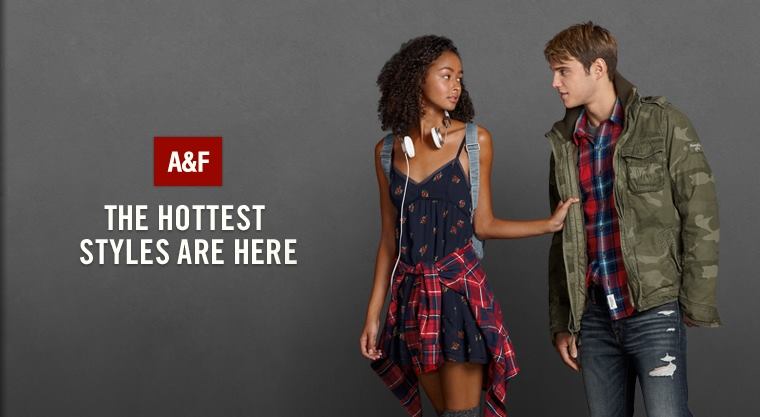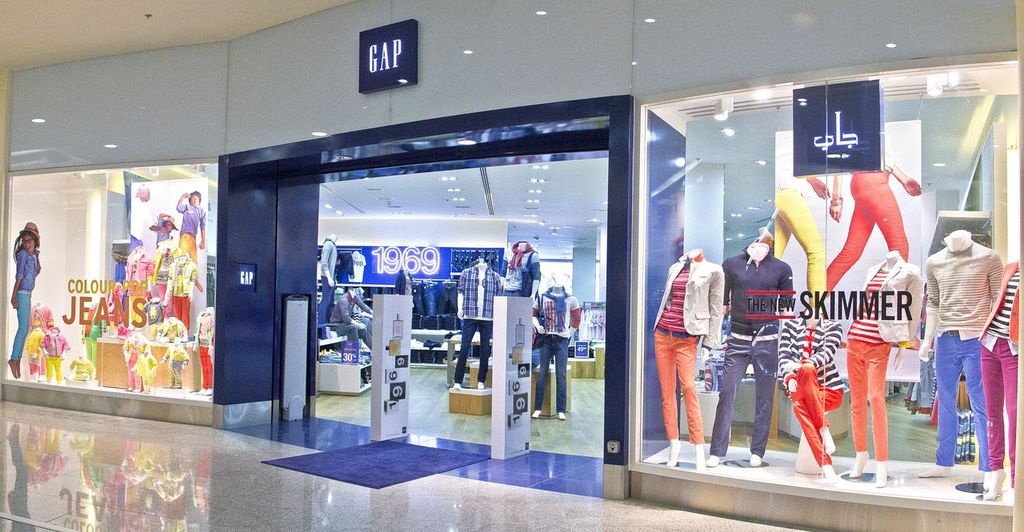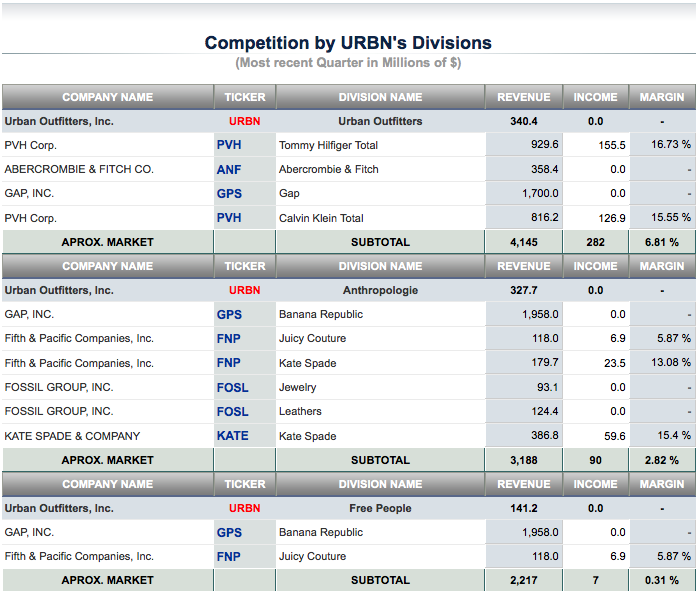The specialty retail, direct-to-consumer and the wholesale apparel businesses are each highly competitive. Urban Outfitters says its retail stores compete on the basis of, among other things, the location of their stores, the breadth, quality, style, and availability of merchandise, the level of customer service offered and merchandise price. Although they feel the eclectic mix of products offered in their retail stores helps differentiate them, it also means that Urban Outfitters, Anthropologie, Free People and Terrain stores compete against a wide variety of smaller, independent specialty stores, as well as department stores and national specialty chains.
Comparing the results to its competitors, Urban Outfitters Inc reported Total Revenue increase in the 3 quarter 2014 by 5.22 % year on year, while most of its competitors have experienced contraction in revenues by -0.08 %, recorded in the same quarter. With net margin of 5.79 % Urban Outfitters Inc achieved higher profitability than its competitors.
Primary/Secondary Competitors
Abercrombie & Fitch Co.
Abercrombie & Fitch Co. is an American retailer that focuses on casual wear for young consumers, and is headquartered in New Albany, Ohio, a suburb of Columbus. It has over 400 locations in the United States, and is expanding internationally. The company operates two offshoot brands: Abercrombie Kids and Hollister Co., in addition to two brands, Ruehl No.925 and Gilly Hicks, that closed in early 2010 and 2012. A&F is for college-age men and women, Hollister is for 12- to 18-year-olds, and abercrombie—with a little “a”—is for those under 12.According to CSIMarket.com Abercrombie & Fitch Co. has a total market share of 1.46%.
Return on equity has greatly decreased when compared to its ROE from the same quarter one year prior. This is a signal of major weakness within the corporation. Compared to other companies in the Specialty Retail industry and the overall market, Abercrombie & Fitch’s return on equity significantly trails that of both the industry average and the S&P 500. Sales at established stores have fallen in five of the past seven years. Profits for 2014 were expected to be about $106 million, less than half of what they had been in 2012.
The A&F stores, mostly in malls, had dark wood shutters and played loud dance music. Black-and-white photos of young men and their abs adorned the walls and the shopping bags. The attitude—conformist, sexy, exclusive.
A Piper Jaffray survey in fall 2013 asked teen girls what brands they no longer wear: A&F and Hollister ranked second and third. (Aéropostale was first.) By the end of 2013, a year in which same-store sales dropped 11 percent at Abercrombie, the company had closed at least 220 mall stores. Another 120 stores in the U.S. would be gone within two years, it said.
in 2004 Abercrombie launched a new brand, Ruehl No. 925, complete with a fictional backstory, involving a nineteenth-century Greenwich Village merchant, concocted by the marketing department. But Abercrombie badly mistimed his entry into the market. Already, online sales were generating an ever-growing pile of revenue for the apparel industry, and fast-fashion retailers such as H&M were churning out low-price approximations of high-end items. Consumers failed to see the appeal of a line that trafficked in the same basic style as Abercrombie, especially when it was prohibitively expensive. In 2009, after spending untold millions, Abercrombie closed all 29 Ruehl storefronts nationwide.
For Abercrombie, the collapse of Ruehl presaged a larger decline in sales and stature that persists to this day.
The Gap, Inc. commonly known as Gap Inc. or Gap, is an American multinational clothing and accessories retailer. It was founded in 1969 by Donald Fisher and Doris F. Fisher and is headquartered in San Francisco, California. The company operates six primary divisions: the namesake banner, Banana Republic, Old Navy, Piperlime, Intermix, and Athleta. Gap Inc. was surpassed by Spanish-based Inditex Group as the world’s largest apparel retailer, based on the total numbers of international locations, however it remains the largest specialty retailer in the United States. As of September 2008, the company has approximately 135,000 employees and operates 3,076 stores worldwide, of which 2,551 are located in the U.S. According to CSIMarket.com The Gap, Inc. has a total market share of 6.12%.
COMPANIES IN THE INDUSTRY


